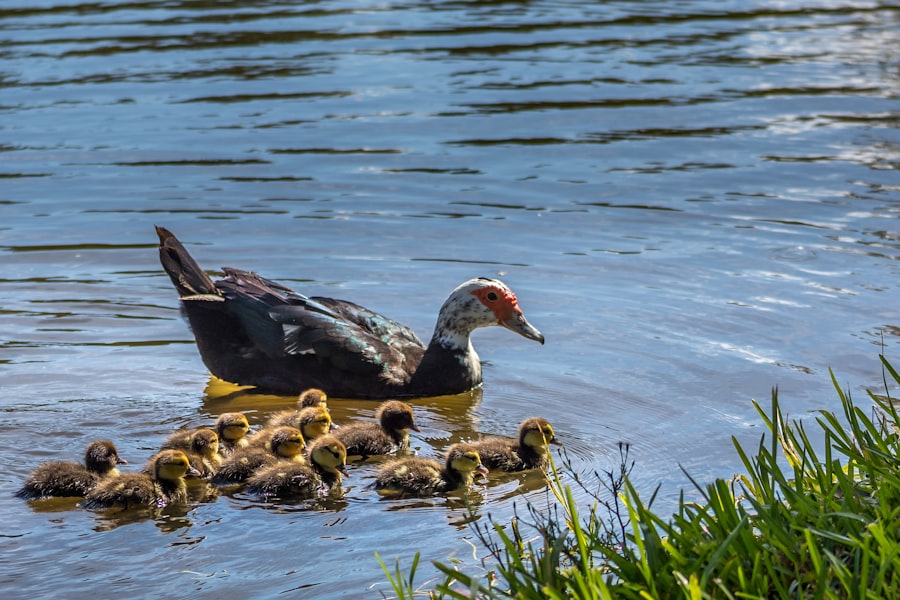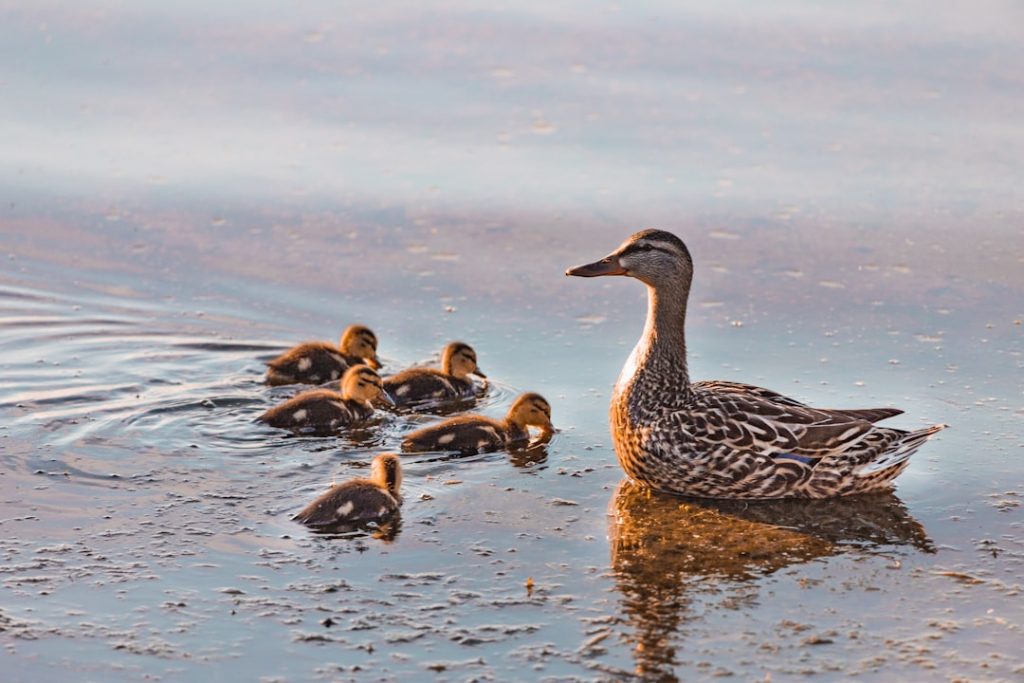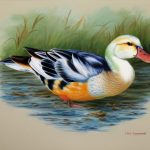Duck breeds come in a wide variety, each with its own unique characteristics and traits. When it comes to raising ducklings, it’s important to understand the different breeds and their specific needs. Ducklings are adorable and fluffy creatures that require special care and attention during their early stages of life. From the moment they hatch, ducklings are full of energy and curiosity, making them a joy to watch and care for. As they grow, it’s important to understand the specific needs of each breed in order to provide them with the best care possible. In this article, we will explore the different duck breeds as babies, how to identify them, their characteristics, and how to care for them.
Table of Contents
- 1 Identifying Different Duck Breeds as Ducklings
- 2 Understanding the Characteristics of Different Duck Breeds as Babies
- 3 Caring for Different Duck Breeds as Babies
- 4 Common Health Issues in Duck Breeds as Babies
- 5 Socializing Different Duck Breeds as Babies
- 6 Choosing the Right Duck Breed as a Baby
- 7 FAQs
- 7.1 What are the different duck breeds as babies?
- 7.2 How can you identify different duck breeds as babies?
- 7.3 Do different duck breeds as babies have different care requirements?
- 7.4 What are some common characteristics of duck breeds as babies?
- 7.5 Are there specific considerations for raising different duck breeds as babies?
Key Takeaways
- Duck breeds as babies come in a variety of sizes, colors, and patterns
- Identifying different duck breeds as ducklings can be challenging due to their similar appearances
- Understanding the characteristics of different duck breeds as babies can help in providing appropriate care
- Caring for different duck breeds as babies involves providing proper nutrition, warmth, and protection
- Common health issues in duck breeds as babies include respiratory infections and nutritional deficiencies
- Socializing different duck breeds as babies is important for their mental and emotional development
- Choosing the right duck breed as a baby requires considering factors such as space, climate, and intended purpose
Identifying Different Duck Breeds as Ducklings
Identifying different duck breeds as ducklings can be a fun and rewarding experience. There are many different breeds of ducks, each with its own unique characteristics and traits. Some common duck breeds include the Pekin, Mallard, Rouen, and Khaki Campbell. Each breed has its own distinct appearance, such as feather color, size, and shape. Pekin ducklings are known for their bright yellow feathers and orange bills, while Mallard ducklings have a mottled brown and yellow appearance. Rouen ducklings are similar in appearance to Mallards but are larger in size, with a darker plumage. Khaki Campbell ducklings are known for their khaki-colored feathers and upright stance. By observing these physical characteristics, it is possible to identify different duck breeds as ducklings. Additionally, some breeds have specific behavioral traits that can help in identification. For example, Khaki Campbell ducklings are known for their active and curious nature, while Pekin ducklings are more docile and calm. Understanding these differences can help in accurately identifying different duck breeds as babies.
Understanding the Characteristics of Different Duck Breeds as Babies
Understanding the characteristics of different duck breeds as babies is essential for providing proper care and meeting their specific needs. Each breed has its own unique traits and behaviors that can influence how they are raised. For example, Pekin ducklings are known for their friendly and calm nature, making them a popular choice for backyard flocks. They are also fast-growing and have a high feed conversion rate, making them an economical choice for meat production. On the other hand, Khaki Campbell ducklings are known for their excellent egg-laying abilities, making them a popular choice for egg production. They are also active foragers and do well in free-range environments. Understanding these characteristics can help in choosing the right breed for your specific needs and preferences. Additionally, knowing the specific needs of each breed can help in providing proper care and ensuring their health and well-being as they grow.
Caring for Different Duck Breeds as Babies
Caring for different duck breeds as babies requires attention to their specific needs and behaviors. Providing a warm and safe environment is essential for the health and well-being of ducklings. This includes providing a draft-free brooder with a heat lamp to maintain the appropriate temperature for their age. Additionally, providing a balanced diet that meets their nutritional needs is crucial for their growth and development. Different breeds may have varying dietary requirements, so it’s important to research and provide the appropriate feed for each breed. Regular access to clean water is also essential for ducklings, as they need to stay hydrated and clean. Proper hygiene and cleanliness in their living environment are important for preventing diseases and ensuring their overall health. Lastly, providing opportunities for exercise and socialization is important for their mental and physical well-being. Allowing them to explore and interact with their environment will help them develop into healthy and happy adult ducks.
Common Health Issues in Duck Breeds as Babies
Like any young animals, ducklings are susceptible to a variety of health issues that can affect their growth and development. Common health issues in duck breeds as babies include respiratory infections, nutritional deficiencies, and parasites. Respiratory infections can be caused by poor ventilation or exposure to drafts, leading to symptoms such as sneezing, coughing, and difficulty breathing. Nutritional deficiencies can occur if ducklings are not provided with a balanced diet that meets their specific needs. This can lead to stunted growth, weak bones, and other health problems. Parasites such as worms can also affect the health of ducklings if not properly treated. Regular monitoring of their health and behavior is important for early detection of any potential health issues. Providing a clean living environment, proper nutrition, and regular veterinary care can help prevent and address common health issues in duck breeds as babies.

Socializing different duck breeds as babies is important for their overall well-being and development. Ducklings are social animals that thrive on interaction with their flock mates and human caregivers. Providing opportunities for socialization from a young age can help them develop into well-adjusted adult ducks. This includes handling them gently and regularly to build trust and familiarity with humans. It’s also important to provide opportunities for them to interact with other ducklings or adult ducks in a safe and supervised environment. This will help them learn important social behaviors and hierarchies within the flock. Additionally, providing enrichment activities such as toys, puzzles, or access to natural elements like water or grass can help keep them mentally stimulated and engaged. Socializing different duck breeds as babies will help them develop strong bonds with their caregivers and flock mates, leading to happier and healthier adult ducks.
Choosing the Right Duck Breed as a Baby
In conclusion, understanding the different duck breeds as babies is essential for providing proper care and meeting their specific needs. From identifying different breeds to understanding their characteristics, caring for their health, and socializing them, each aspect plays a crucial role in raising healthy and happy ducks. By taking the time to research and understand the specific needs of each breed, you can make an informed decision when choosing the right duck breed as a baby. Whether you’re looking for friendly pets, prolific egg layers, or fast-growing meat ducks, there is a breed out there that will suit your needs and preferences. With proper care and attention, raising ducklings can be a rewarding experience that will bring joy to any poultry enthusiast or backyard farmer.
If you’re fascinated by duck breeds as babies, you might also be interested in learning about the egg-laying habits of geese. Understanding how many eggs geese lay can provide valuable insights for breeders and enthusiasts. Check out this informative article on Poultry Wizard to discover more about this aspect of geese breeding.
FAQs
What are the different duck breeds as babies?
Some common duck breeds as babies include Pekin, Mallard, Rouen, Khaki Campbell, and Muscovy.
How can you identify different duck breeds as babies?
Duck breeds can be identified by their physical characteristics such as size, color, and markings. For example, Pekin ducklings are yellow with orange bills, while Mallard ducklings have a mottled brown and yellow appearance.
Do different duck breeds as babies have different care requirements?
Yes, different duck breeds may have specific care requirements as babies. For example, some breeds may require different temperatures for brooding or have specific dietary needs.
What are some common characteristics of duck breeds as babies?
Common characteristics of duck breeds as babies include being precocial, meaning they are able to walk and swim shortly after hatching. They also have downy feathers and are typically very active.
Are there specific considerations for raising different duck breeds as babies?
Yes, there are specific considerations for raising different duck breeds as babies, such as providing appropriate housing, diet, and socialization based on the breed’s specific needs.
Meet Walter, the feathered-friend fanatic of Florida! Nestled in the sunshine state, Walter struts through life with his feathered companions, clucking his way to happiness. With a coop that’s fancier than a five-star hotel, he’s the Don Juan of the chicken world. When he’s not teaching his hens to do the cha-cha, you’ll find him in a heated debate with his prized rooster, Sir Clucks-a-Lot. Walter’s poultry passion is no yolk; he’s the sunny-side-up guy you never knew you needed in your flock of friends!







